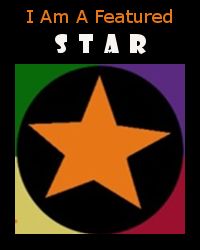This summer, while we were staying in New Jersey, Dave and I had the opportunity to travel on our own, leaving the kids to stay with Dave’s parents for a few days. We chose to travel to Cuba and the number one thing I heard from people when I told them we were going to Cuba was the question “Why?” I guess the answer is that I always wanted to see what Cuba is like and the opportunity to visit came. Under Obama’s revisions to the travel ban to Cuba, Americans could travel on their own under the “people to people” visa. In the past, that type of visit required permission from the American government, and use of American dollars was restricted. At the time that we traveled, you could exchange money in cash for Cuban pesos, but you still cannot use American credit cards – you need to bring enough cash with you. Now, Trump has again put restrictions on “people to people” travel and you now may only visit within an organized tour group.
We flew to Havana from Newark and stayed at what is known as a casa – it was not through Air BnB, but it is the same idea. It seemed that most of the people who had fixed up their homes had made them so that they can have tourists stay in them. We stayed at the Casa Colonial Yadilis and Yoel. While they have an email address and you can send a booking request online, you must pay in cash in person. It is very inexpensive at about $40 per night. However, when you keep in mind that the average monthly salary in Cuba is only about $30, you see that $40 per night is a lot.
There is no free internet in Cuba and many people living there only check their email a few times a day or less, as they must go to public internet locations in order to connect. We didn’t buy an internet card because I didn’t want to sit around trying to make it work or waste time on the internet, so we were disconnected for the four days we were there. We did pay for internet on the plane home to catch up!
The city of Havana was very interesting to me. It reminded us of other Caribbean cities we have been to and some areas also were European inspired. Some of Havana has been restored, but much of it consists of old, fancy buildings and homes that are falling apart. We took a tour on our second day there and I realized that if you stick to touring the restored Old Havana, you may miss seeing the streets of Central Havana, which were the most interesting, colorful, and populated areas.
Many people know that Havana is home to many classic American cars. It seems that these cars are mostly used as taxis, as tourists are certainly attracted to them.
Walking around the city on the first day we were there, I took a lot of photos of the streets we walked on and passed by.
We were looking for the synagogue which remains in Cuba and we did find it, but it was closed at the time. Dave went back later in the trip at a time when it was open.
There are five main squares in Old Havana and we walked through them, although we did not know what we were seeing in many cases. The squares, or plazas, are surrounded the more fancy colonial type buildings as well as older churches and history.
Along the water is a road known as the Malecon. People fish there and hang out there in the evenings.
Across the water is the Morro fortress, which we visited on our tour on our second day in the city.
Other than drinking, there does not seem to be much to do at night in Cuba.
We did check out the Fabrica de Arte Cubano (FAC), which is an art “factory” with galleries and performance stages located in a former cooking oil plant. It is not private or government run, instead classified as a community project, which gives it independence. It was an interesting place to check out!
At first, I considered whether to write about our trip all in one post. As you can see, I took a lot of photos and we saw even more things on Days 2 and 3, so there will be more to come about our visit!
Have you ever thought about visiting Cuba?




